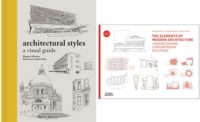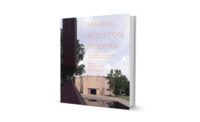This meticulously researched account relates how, from 1951 until 1986, the curator and director Arthur Drexler gave the influential Architecture and Design department of New York’s Museum of Modern Art “a new purposeful cohesiveness.” More compelling is Thomas Hines’s behind-the-scenes revelations of the pitfalls of insider museum politics.
Drexler’s career is a tale of triumph and tragedy. It was a triumph that Drexler, who came from a modest Jewish family in Brooklyn and was educated in public schools (albeit the selective High School of Music and Art), and did not finish his architecture studies at Cooper Union, went to work for leading architect and designer George Nelson and then was embraced by MoMA’s patrician and Harvard educated curator, the architect Philip Johnson. Johnson, the founder of the museum’s department of Architecture and Design—and two-time head of the department—was so impressed by Drexler’s writing on the Glass House (1949) for Interiors magazine that he hired the brilliant young critic in 1951 as the architecture curator; in 1956, Drexler was named department director. It was a tragedy that his tenure was later compromised, according to Hines, by the critical failure of two of his major exhibitions, Architecture of the Ecole des Beaux Arts (1975) and Transformations in Modern Architecture (1979).
Drexler’s shows in his first five years at MoMA included the usual suspects, among them the work of Le Corbusier, postwar architecture in the U.S., and De Stijl. But he also introduced subjects new to an art museum— for example, 8 Automobiles: An Exhibition Concerned with the Aesthetics of Motorcar Design (1951). Certain programs that Drexler initiated, such as The New City: Architecture and Renewal (1967), deserve more space in the book, compared with the rarity of such exhibitions later. Also, Hines might have commented on Drexler’s part in the disastrous 1984 César Pelli expansion of MoMA.
At the start, Drexler could do no wrong, being Johnson’s protégé. In later years, however, when he veered from the museum’s commitment to Modernism—firmly established in 1932 by Henry-Russell Hitchcock and Johnson’s show on the International Style—Drexler suffered a loss of support, even from previously adulatory critics. He was unable to convince ferocious detractors that the Beaux-Arts exhibition represented premodern rather than Postmodern architecture. And, in spite of its high-modern content, Transformations was trashed. Even with Drexler’s subsequent purely modern shows, one, in 1982, The Architecture of Richard Neutra: From International Style to California Modern (cocurated with Hines), and then Mies van der Rohe Centennial Exhibition in 1986, he never completely regained his previous stature. He died in 1987, at age 61.
Hines assiduously ascribes Drexler’s tribulations to “nasty politicking.” But he leavens that with a quote from design curator Mildred Constantine: “There were setbacks, disappointments, and criticism, but those only served to sharpen and clarify the meaning of our work.”







Post a comment to this article
Report Abusive Comment